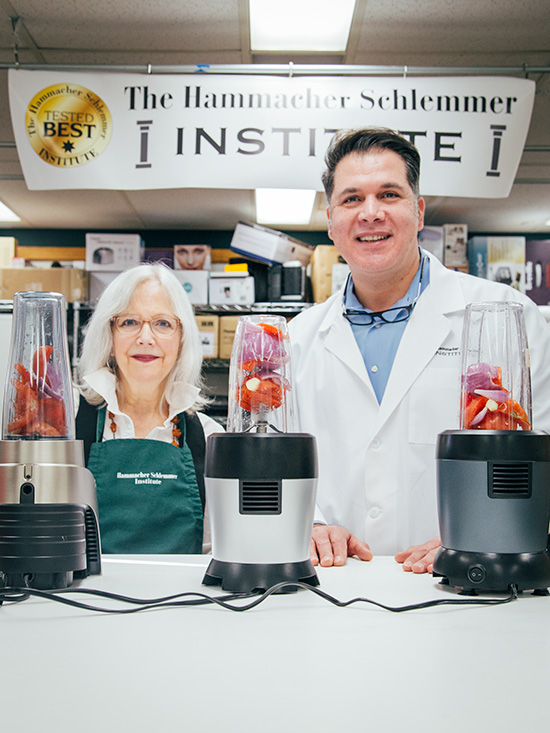
While new catalog products outside of Hammacher Schlemmer’s “The Best” category are also thoroughly inspected by Mohammed Faraj’s testing team at the Hammacher Schlemmer Institute to ensure that they are safe, that instructions are easy to understand, and that the manufacturer’s claims are accurate, “The Best” products, however, utilize a protocol that includes one or more of the following methods: in-house testing, a testing panel, and third-party experts/or testing labs.
In fall 2017 Faraj’s team met with the Hammacher Schlemmer merchandising group to discuss items to appear in this year’s summer catalogs.
A personal blender was selected as an item in “The Best” category and the testing process began:
- A survey was sent to current Hammacher Schlemmer customers of similar items and the Hammacher Schlemmer Institute reached out to a prescreened panel for volunteers who would be interested in serving on a personal blender testing panel.
- The survey queried panelists on usage, product attributes, and product features.
- Based on these responses, Faraj’s team researched a number of personal blenders and obtained sample products that were tested in house for durability, noise level, performance, and operation. Faraj used a heat detector to determine if the personal blender remained at an acceptable temperature, for example.
- The team then narrowed down the selection to the top five personal blenders based on in-house testing. The product names were removed so that panelists would not be influenced by brand or past experience.
- Because of ease of item portability and test design, the personal blenders were given to panelists to use at home along with recipes for a smoothie and a salsa, which they were required to prepare.
- Panelists concluded their participation by completing a post-testing questionnaire evaluating the performance and ease of use of each personal blender.

While the testing process takes three to four weeks to complete, the team’s work continues once a product makes it into a catalog.
“We look at online comments on products every day. Even though we evaluate products on the front end, maybe the factory did something on the back end,” explains Sheri Camarata, senior manager of product research, adding that a product will be pulled if the test team notices a trend of complaints. “We’re not done once the item goes to the customer; we’re still following up to make sure that what they’re getting is what we’ve approved and accepted as our standard and our quality.”